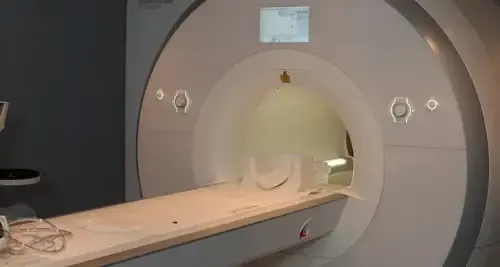Sialolithiasis or Salivary gland lithiasis
"We bet on the treatment of salivary gland pathologies by means of minimally invasive techniques".
DR. JORGE DE ABAJO LARRIBA
SPECIALIST. OTORHINOLARYNGOLOGY DEPARTMENT

What is sialolithiasis?
Sialolithiasis or salivary gland lithiasis is the formation of calculi in the drainage ducts of the major salivary glands (parotid, submaxillary and sublingual).
The calculus produces an obstruction in the exit of saliva into the mouth, causing pain, inflammation and, sometimes, infection.
In the Clinica we use minimally invasive techniques in which, unlike conventional removal surgery, it is possible to preserve the gland in the vast majority of cases, reducing the risks that may involve aesthetic deformities such as facial nerve paralysis or loss of facial volume or Frey syndrome (profuse sweating of the skin of the parotid region when eating food).
As these are minimally invasive techniques, pain is minimized and recovery is very fast, so that in most cases, the patient can return to work the next day.

What are the symptoms of salivary gland stones?
Stones that block the flow of saliva cause inflammation and pain, especially after eating, when there is a greater stimulation of the flow of saliva.
Symptoms may subside after a few hours. Some stones cause intermittent symptoms or are asymptomatic.
If a complete obstruction occurs, the gland increases more in size and becomes painful to the touch, even fever can appear due to bacterial superinfection of the gland (acute bacterial sialoadenitis).
The most common symptoms are:
- Edema.
- Pain.
- Inflammation.
- Fever.
Do you have any of these symptoms?
You may have a stone in your salivary gland
How is sialolithiasis diagnosed?

The diagnosis of sialolithiasis is usually made by the clinical history that the patient takes and the physical examination and salivary gland ultrasound. It is common for the specialist to notice the stone when palpating the salivary gland, especially if the stone is located in the distal part of the Wharton's or Stenon's duct.
Sometimes, it may be necessary to perform complementary tests such as simple x-ray, CT scan, MRI or sialography (injection of intraglandular contrast).
How is salivary gland lithiasis treated?
Minimally invasive techniques to avoid possible complications
Conservative measures consist of local heat, massage and hydration to try to dissolve and mobilize the stone.
The secretion of saliva can be stimulated with mint tablets or drops of lemon juice and in this way, try to expel the stone in a natural way.
If a bacterial infection is suspected, it will be necessary to begin antibiotic treatment.
Sialoendoscopy is used both in the diagnosis and treatment of pathologies of the parotid and submaxillary glands.
It consists of channeling and visualizing the gland's secretory apparatus using a miniaturized endoscope. In this way, it makes it possible to treat the extraction of stones, the dilation of stenosis (narrowing) or the injection of intraglandular medication.
The intraoral approach to the Stenon and Wharton ducts is used primarily for the removal of large stones, which cannot be removed by sialoendoscopy.
Where do we treat it?
IN NAVARRA AND MADRID
The Department of Otolaryngology
of the Clínica Universidad de Navarra
The Department of Otorhinolaryngology of the University of Navarra Clinic is a national and world reference in numerous highly specialized surgical procedures.
We have the latest technology and we perform all diagnostic tests in less than 48 hours in order to offer our patients the best solution in the shortest time possible.
We were one of the first centers in Spain to use robotic surgery in the surgical treatment with the Da Vinci® System.
Organized in specialized units:
- Otology - Hearing.
- Rhinology - Nose.
- Pharyngology - Throat.
- Laryngology - Voice.
- Balance disorders.
- Head and neck problems.

Why at the Clinica?
- Experts in the treatment of hearing problems.
- Pioneers in axillary surgery to avoid scarring.
- National reference center in tissue sealing for tonsil removal.












